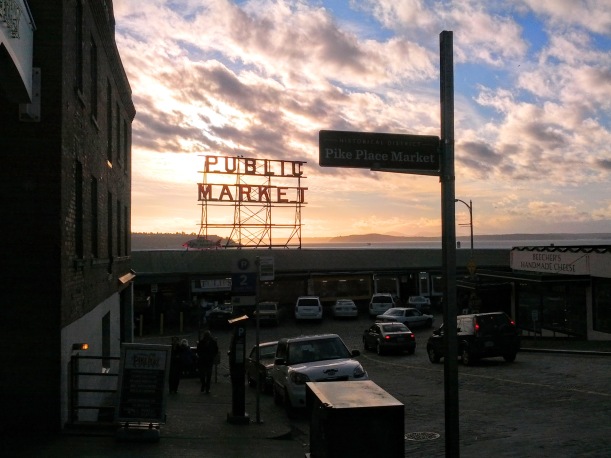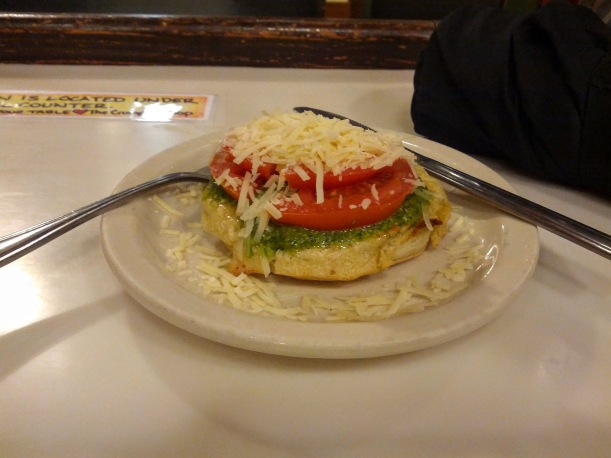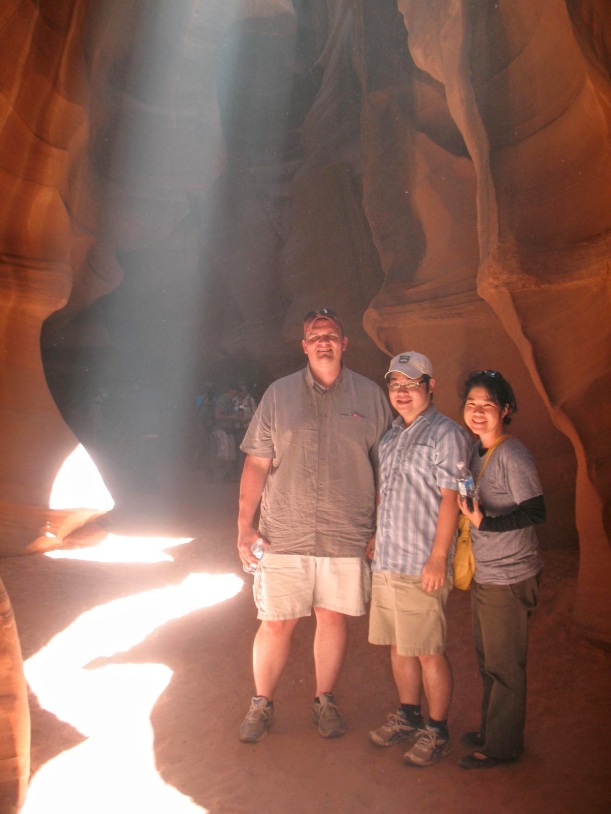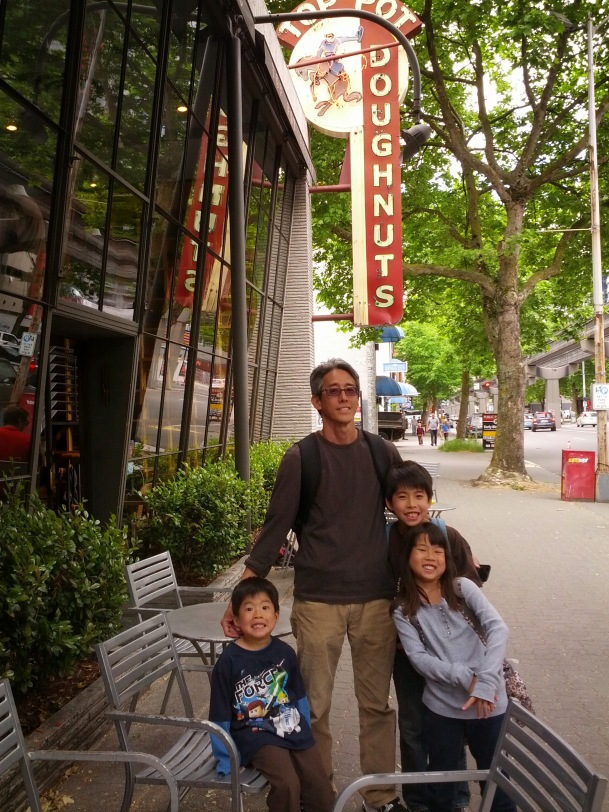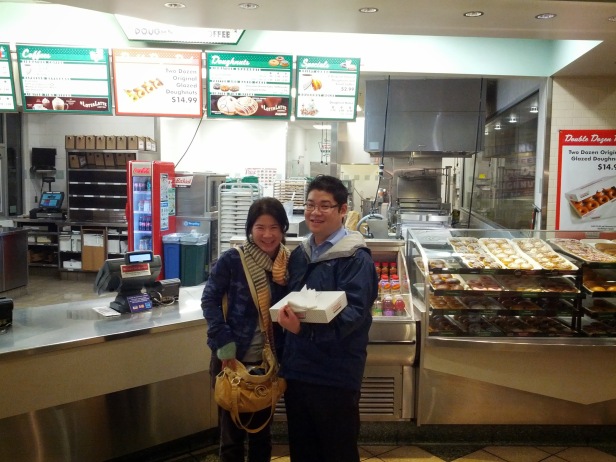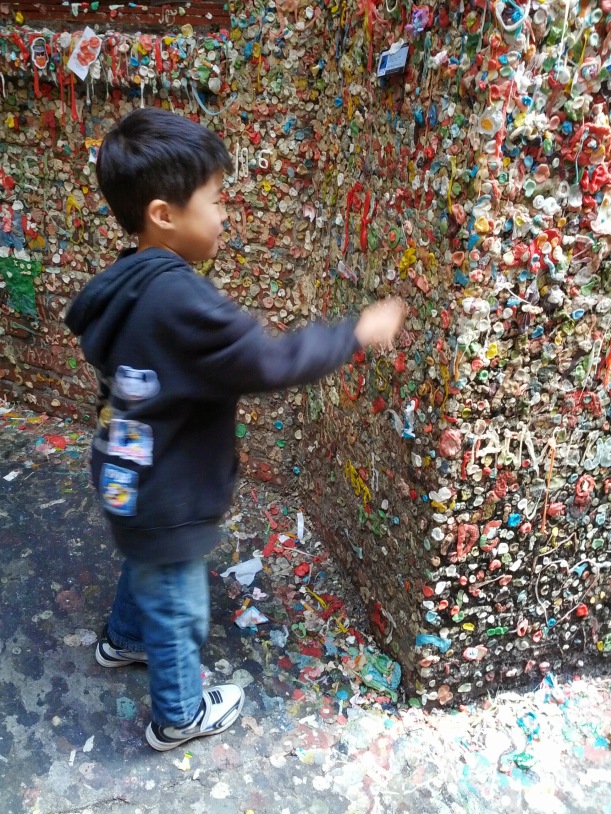Knowing that the bulk of our visit would be concentrated in the Many Glacier and St. Mary regions of Glacier National Park, we opted to camp in St. Mary. Online reviews suggested that St. Mary was quieter and less crowded than West Glacier, and we found this to be true as well. Although I would had preferred to camp directly in the park, at 6 minutes away from the St. Mary Visitor Center, St. Mary KOA was a convenient kid-approved compromise that included a swimming pool, hot tub, and showers. The stargazing was indeed as stellar as I’d hoped; seeing the Milky Way and myriad of nighttime stars from our tent is an experience I won’t soon forget. Our campsite was quiet and secluded; we absolutely loved our time there!


Day 2 began with a 35 minute drive to Swiftcurrent Motor Inn, located in the Many Glacier region of the park. We had an 8:30 am date with Ranger Eric for the 10-mile, 1,200 ft elevation gain Heart of Glacier hike to Iceberg Lake. Although we’d purchased bear spray the previous day, taking our first big hike in Glacier with experienced company seemed like a wise idea, and we looked forward to learning from Ranger Eric’s wealth of knowledge. The crew that gathered that morning on the Swiftcurrent Inn porch numbered over 20, running the gamut from young to old, fit to less so, experienced to those toting just one 16 ounce bottle of water for an expected 5-6 hour hike (!! not the best idea!).

Ranger Eric moved at a quick clip. The first 15 minutes of the hike included a series of fairly steep switchbacks, and the faster-than-anticipated pace left me winded and nervous that we might have gotten in over our heads. However, once we reached a higher elevation, Ranger Eric explained that the first 15 minutes were the steepest, and that the going would be much easier from then on. Fortunately, he was right, and pace was never an issue after that initial climb. Later, I also realized that the faster pace was meant to compensate for the frequent ten-minute breaks and ranger talks to come.


The hike to Iceberg Lake differed from our experience at Hidden Lake, but it was every bit as spectacular–perhaps even more so. Mount Grinnell dominated the skyline the first mile of the trail; the Ptarmigan Wall was just barely visible in the distance. Little did I realize that this hike would eventually lead us to the foot of this distant wall! Unlike Hidden Lake trail, the lower elevation of Iceberg Lake trail made for snow-free hiking and different alpine views. Here, summer was in full bloom: an explosion of bear grass and riot of wildflowers commanded the mountainside. Like with Hidden Lake, I found myself turning constant circles to take in the magnificent 360 degree views.






Shortly after completing the initial climb, we came upon an aspen grove that overlooked a wide meadow clearing. Here, we spotted not one, but two moose bulls grazing among the slender trunks! As moose sightings had eluded us in Rocky Mountain, Grand Teton, and Yellowstone National Parks, this was quite a thrill for our family! Even from a distance, it was clear that these were massive, majestic creatures.

About a mile in, we came upon an unobstructed frontal view of Swiftcurrent Glacier and Shield Mountain, aka Mt. Wilbur. Knowing that these glaciers may disappear within our lifetimes made this sighting all the more special. Ranger Eric explained that contrary to popular belief, Glacier National Park is not named for its abundance of glaciers (there are parks that contain greater numbers), but for the way its landscape was carved by the movement of glaciers.

Climbing into the treeline, Ranger Eric pointed out trees with distinct bear claw markings, embedded with tufts of fur. We knew that we were in a region with one of the highest concentration of grizzlies in the lower 48, but it was still a little disconcerting to see how many trees were marked. We also stepped over several piles of fresh bear scat that made us truly appreciate the wild and untouched nature of Glacier. Ranger Eric also explained how bears graze in elevator fashion up the mountainside; there is a one-day bloom difference in flora per one-hundred feet of elevation gain which influences the bears’ feeding preference.


Climbing above the treeline to an exposed area brought cooler temperatures and a commanding view of the Ptarmigan Wall, now closer than ever. Its pinnacle-spired ridge and sheer cliffs were magnificent to behold. Below the treeline, numerous waterfalls both large and small carved exquisite paths across the mountainside.



As Ranger Eric talked about avalanche areas during a snack break at Ptarmigan Falls, I turned to find our youngest fast asleep, gummy bears still in-hand, enroute to his mouth! When I tapped his shoulder, he immediately jumped up and tightened the load lifters on his backpack, saying, “So, two more miles, right?” as if nothing had happened. The narcolepsy incident was hilarious, but it served as a good reminder to more closely monitor the kids’ water/food intake to ensure they maintained good energy reserves.

Three hours after setting out from the trailhead, we finally came upon Iceberg Lake, and what a glorious sight it was. Framed below the commanding spires and sheer cliffs of Ptarmigan Wall, Iceberg Lake loomed far more massive and imposing than mere photos could possible capture. With lake water the prettiest shade of teal and chunks of floating ice large enough to withstand human weight, Iceberg Lake defied words. We learned that the term ‘iceberg’ as it is applied to this lake is actually a misnomer, as these ‘bergs’ are not the result of frozen lake water, but rather, the broken-off chunks of frozen ice fields. Hearing that there were no icebergs in the lake as recently as a week before our trek, we felt grateful to have witnessed Iceberg Lake in its full glory. Like at Lake McDonald, there was a collective, reverent hush here in spite of the number of hikers present.








We enjoyed a leisurely packed lunch of peanut butter, pretzel crisps, and trail mix at the lake, marveling in the view that was made all the more special by the effort it took to get there. Soon thereafter, our hiking group dispersed, traveling in pairs or small groups back to the trailhead at their own pace with Ranger Eric bringing up the rear. Less than a mile into our return trip, my oldest shouted, “Oh, my gosh, look!” which got my adrenaline pumping in a holy-cow-I-hope-my-husband-has-the-bear spray-at-the-ready kind of way. He pointed just off the trail and yell-whispered, “Bighorn sheep!” Not 5 feet below us was a bighorn sheep looking utterly unimpressed and annoyed by our presence in his path. We contained our excitement and scrambled twenty yards back to give him berth. It was an amazing first encounter for us with bighorn sheep! We watched him canter across the trail and up the mountainside, to which the kids exchanged grins of astonishment and whispers of, “Best hike ever!” It was one of those moments of pure joy where I remember feeling exceedingly blessed to be able to experience such a wild and remarkable place with my family.



Without ranger talks or long breaks, we were able to make it back to Swiftcurrent Inn in just under 2 hours, where we treated ourselves to cold drinks and some well-earned ice cream and cheese/beef sticks. While not a difficult hike, the hike to Iceberg Lake was a hot and fairly long one at ten miles, and we were glad to soak our feet in the KOA hot tub and cool off with a dip in the swimming pool for sure!
Tips for families:
- It’s important to note that this ranger-guided hike does not include a ranger on the return trip, so carrying bear spray is advisable.
- Depending on your return pace, the projected time for this hike is 6-7 hours, so plan water and food accordingly. Snacks were indispensable to keeping our energy up; we each packed a quart-sized Ziploc of trail mix, dried fruit, and candy that we reached for throughout the hike. Note that there is also a convenient pit toilet at Ptarmigan Falls 3 miles into the hike.
- Much of this hike is exposed; sunblock and hats are advisable.
- While the initial switchbacks may be trying for little ones, the rest of the trail is very moderately graded, making this hike very doable for kids 8 and up despite its long length.
I’d love to hear about your experience at Iceberg Lake! What other trails have you enjoyed at Glacier National Park?
(Photo credit to my husband and son for many of the above photos!)
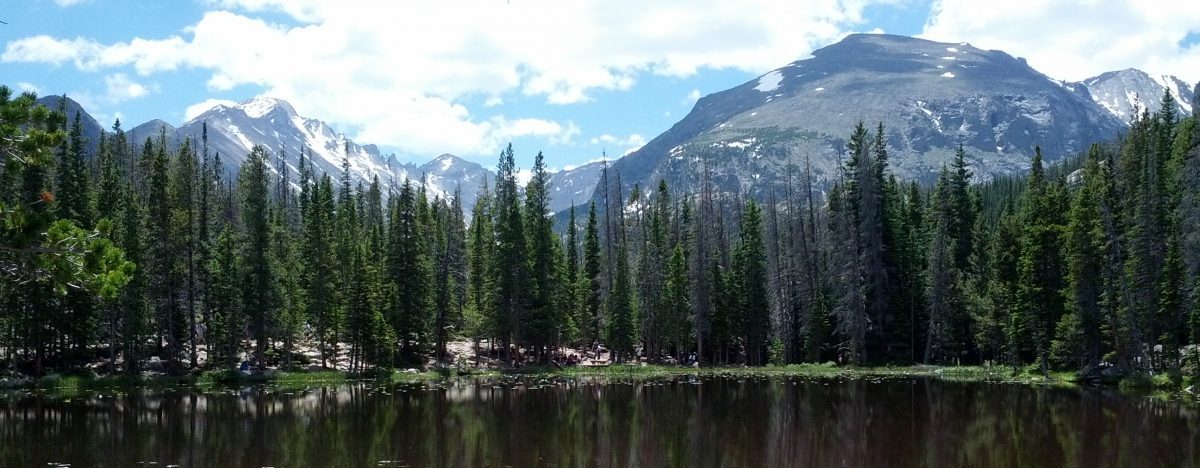


























 Located at an elevation of 6,600 feet, Logan Pass marks the highest point along GTSR, as well as the start of numerous hikes in Glacier National Park. It is also the most popular and crowded stop on GTSR. As the Logan Pass Visitor Center parking lot can be somewhat of a nightmare to navigate, we were happy to secure a parking spot and set out for Hidden Lake without having to circle too long.
Located at an elevation of 6,600 feet, Logan Pass marks the highest point along GTSR, as well as the start of numerous hikes in Glacier National Park. It is also the most popular and crowded stop on GTSR. As the Logan Pass Visitor Center parking lot can be somewhat of a nightmare to navigate, we were happy to secure a parking spot and set out for Hidden Lake without having to circle too long.


 Our trekking poles definitely came in handy for navigating the slippery slopes and ice. And the 360 degree views on this trail? Simply STUNNING. I was so glad my phone was dangling in a waterproof case from my neck, because I found myself reaching to take pictures nearly every second. About ten minutes from the Hidden Lake overlook, we were thrilled to come upon a family of mountain goats, baby kid safely shepherded between mom and dad. Clearly habituated to humans, the shaggy, snow white trio paid us no heed as they ambled across the trail to graze. It was a thrill to come so close to these beautiful creatures.
Our trekking poles definitely came in handy for navigating the slippery slopes and ice. And the 360 degree views on this trail? Simply STUNNING. I was so glad my phone was dangling in a waterproof case from my neck, because I found myself reaching to take pictures nearly every second. About ten minutes from the Hidden Lake overlook, we were thrilled to come upon a family of mountain goats, baby kid safely shepherded between mom and dad. Clearly habituated to humans, the shaggy, snow white trio paid us no heed as they ambled across the trail to graze. It was a thrill to come so close to these beautiful creatures.















